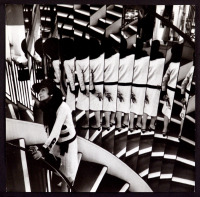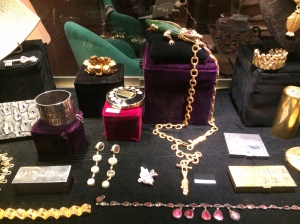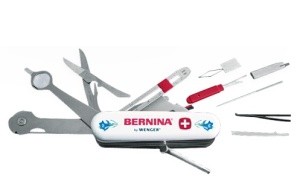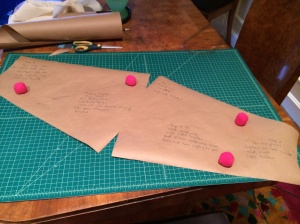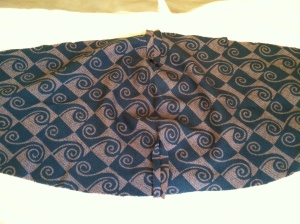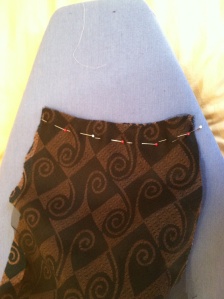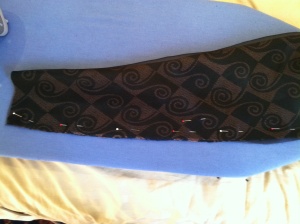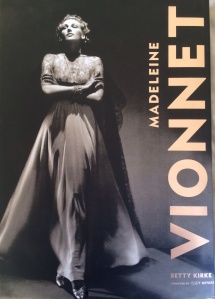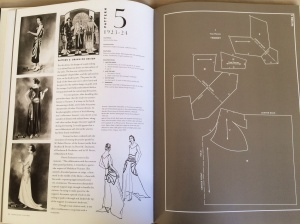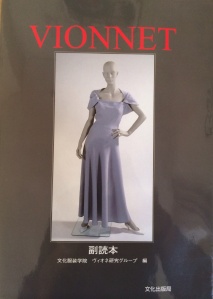Here’s the France style/sewing wrap up before I expire from aesthetic overload:
1. What would a trip to France be without a pointless pilgrimage? Recognize this staircase?
Yeah it’s this one!
It’s Chanel’s atelier at 31 rue Cambon. Last time it I walked by it was locked, but this time the guard let me come right in and take some pictures. Wowza. Why didn’t I do a selfie?
But since Madeleine Vionnet won the Chanel/Vionnet Smackdown post, I also had to pay homage Vionnet’s first atelier, at 222 rue de Rivoli.
Kind of touristy now, but the view of the Tuileries across the rue de Rivoli remains the same.
2. A lot of formerly hot French guys are walking around wearing Wranglers. Wranglers! You don’t look like a cowboy, you look like Uncle Buck. Stop it. You’re bringing down Western civilization.
3. Though this looks like a picture of me eating lunch, drinking wine, and wishing that a magic carpet would transport me to my hotel so I wouldn’t have to ski down an entire Alp to get there, I’m actually testing a design by American Look creator Claire McCardell. She was a skier as well, and in the 40s she developed a wool jersey top with what was then called a “Superman hood” to keep her ears warm.

This was back in the days when the concept of “separates” was very new, and jersey was just beginning to be used for “sportswear,” as before that women didn’t do sports because they were walking around in corsets trying not to get the vapors. (Okay, I’m skipping a few parts of fashion history, but you get the idea.) McCardell, on the other hand, was one of a new breed of sporty, independent women, so she created designs to fit that lifestyle.
You can see this example of McCardell’s Superman hoodie in the online archive of the Metropolitan Museum of Art’s Costume Institute. http://www.metmuseum.org/Collections/search-the-collections/157132?rpp=20&pg=1&ao=on&ft=claire+mccardell&pos=2 That archive is such a good time-waster.
The black Patagonia top I’m wearing in the picture (from their fall 2013 “collection” http://www.patagonia.com/us/product/womens-merino-3-midweight-hoody?p=37145-0&pcc=1147) is made of merino wool jersey, and has a hood that is virtually the same cut as McCardell’s. It’s easy to wear, not too hot, not too cold, and the hood works fine under my ski helmet. It’s ironic that merino wool jersey is now being touted as the miracle fabric for sports, (Insulating! Stink-free!) when McCardell was talking retailers into the same thing more than 75 years ago.
4. More bling from rue de Seine. The round compact that looks like a telephone dial is credited to the Surrealist Artist Salvador Dali, but it was from a 1935 collaboration with designer Elsa Schiaparelli. According to the New York Times, one of these compacts was recently listed on the website 1st dibs for $50,000.
At some point I’ll get around to writing about the single-sleeved Schiaparelli wrap I whipped up last winter, which I’m worn a lot more than my Chanel jackets. Something about it really wows people.
It’s a fun project, and the reissue of the pattern is available from Decades of Style http://www.decadesofstyle.com/vintage-patterns-1950s/5006-1950s-stole. Last spring, I won a Threads Magazine competition by creating this Pinterest page about the project http://www.pinterest.com/juleseclectic/make-your-own-schiaparelli-wrap/. For my prize, Threads sent me a Bernina Swiss Army “Ladies Knife,” full of sewing tools, which thrilled me beyond words, no joke.
5. Love the printed pattern on this light all-wool scarf from Ventilo.
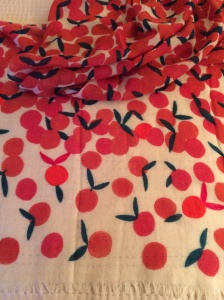
 Every year when we come to Paris, the boxes of clementines in the outdoor markets are a bright spot in the winter gray. Thanks Santa.
Every year when we come to Paris, the boxes of clementines in the outdoor markets are a bright spot in the winter gray. Thanks Santa.
6. Here’s what was in vintage dealer Didier Ludot’s shop window (in the Palais Royal, just north of the Louvre):
 After I go on my gluten, dairy and food-free diet, I’m going back for that ivory beaded Balenciaga with sleeves in the back.
After I go on my gluten, dairy and food-free diet, I’m going back for that ivory beaded Balenciaga with sleeves in the back.
7. You may recognize Paris’ Grand Palais from Chanel’s last few collections, when the giant hall, built for the 1900 World’s Fair, looked like this:
 For the holidays, the French set up an indoor amusement park inside this Beaux Arts wonder.
For the holidays, the French set up an indoor amusement park inside this Beaux Arts wonder.
 Fifteen Euros covered admission and all the rides! My 12-year-old was in heaven. They also set up a temporary champagne bar in the hall with a chanteuse singing Piaf. So much better than Disneyland Paris.
Fifteen Euros covered admission and all the rides! My 12-year-old was in heaven. They also set up a temporary champagne bar in the hall with a chanteuse singing Piaf. So much better than Disneyland Paris.
8. Here’s American ballet star David Hallberg, (from South Dakota!) doing his curtain call for Nureyev’s version of Sleeping Beauty at the Paris Opera Ballet, with Svetlana Zakharova, prima ballerina with the Bolshoi. No words for his perfectly executed and interpreted solo in Act 2. In the last act, the chorus’ costumes were all in a dusty palette of pink, yellow, peach and ochre, like the set, so that the soloists’ jewel-toned costumes popped out in front of them. Yes, I am a dance nerd, too.
No words for his perfectly executed and interpreted solo in Act 2. In the last act, the chorus’ costumes were all in a dusty palette of pink, yellow, peach and ochre, like the set, so that the soloists’ jewel-toned costumes popped out in front of them. Yes, I am a dance nerd, too.
9. And lastly, thanks to the egging on of a number of readers, I did fulfill my threat to go back to Janssens et Janssens and look for black tweed for Chanel #5, the punk meets steampunk little black jacket. I was the only one in there, and in the midst of a long French conversation with the unfailingly friendly saleswoman, I went into some kind of fabric trance, leading me to walk out with some lightweight, all-wool Italian tweed with subtle houndstooth texture (but dark enough that you don’t have to match it, um, I hope), black trim with gray flecks and leather(ette) tubes running lengthwise (punky!), and a black chain sewn onto black satin ribbon to speed up the boring chain application part (and it’s steampunk, really, or clockpunk. One of those). Lining TBA.
Word up about Janssens, they hate doing the paperwork for tax-free shopping, so if you ask for the “detaxe” they’ll tell you it’s a problem (for whatever reason), but because you’re so “nice” they’ll give you a discount.
I’ve dubbed this project “The Kaiser” because that’s what people call Karl Lagerfeld, though probably not to his face. I’ll be working on Chanel jacket #5 in the fall, although at this rate it could end up being fall 2020 after my son graduates.
But now that I’m back from Paris when it drizzles to Boston when it’s a slush heap, I’m thinking about projects for my next trip, an early March long weekend in Los Angeles. This light Italian wool with printed sequins that I got at Janssens will be just right for LA’s “winter” weather.
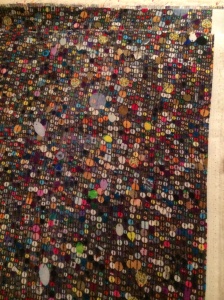 And I need to bust my fabric stash before I go to LA’s newish mega Mood Fabrics store and the third floor vintage fabrics room of International Silks and Woolens.
And I need to bust my fabric stash before I go to LA’s newish mega Mood Fabrics store and the third floor vintage fabrics room of International Silks and Woolens.
Less blabbing on my blog, more sewing!
What are you working on in your part of the world?

